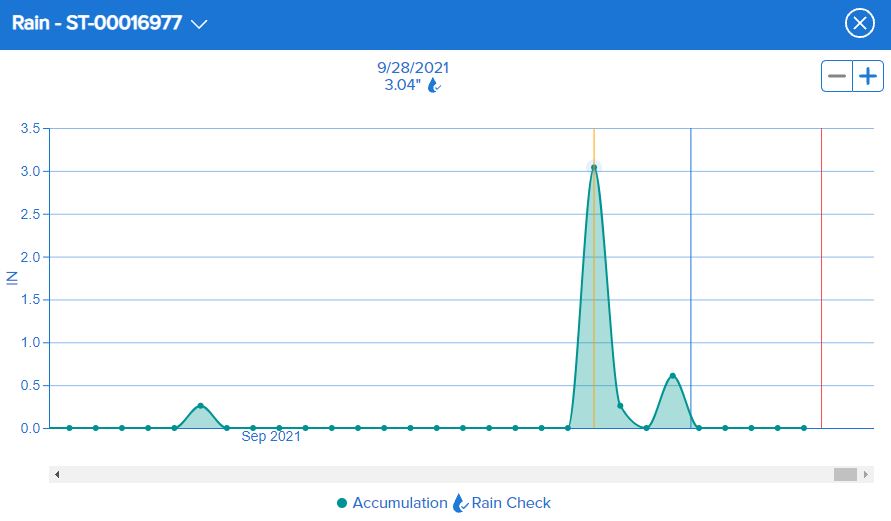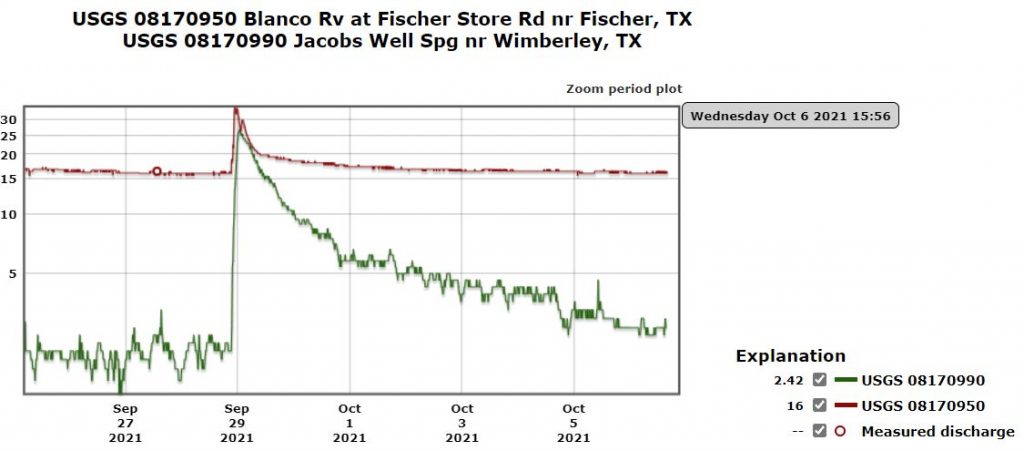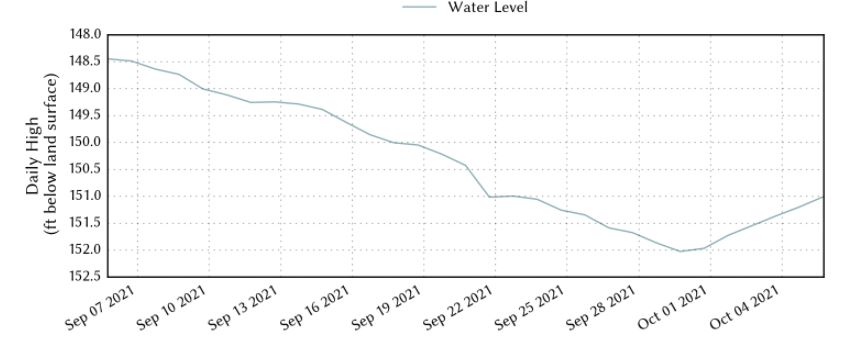
Even with 3-4″ of rain in the last week, area Middle Trinity springs have almost returned pre-rain flow conditions. Pleasant Valley and Park Springs on the Blanco River upstream of Fischer Store Road saw a temporary increase in baseflow, but flow has returned to 16 cubic feet per second (cfs). Baseflow at Jacob’s Well is about 1 cfs higher than pre-rain conditions but on the decline, spring flow is fluctuating between 2-3 cfs currently.

Groundwater levels and spring flow fluctuate through time. Rainfall and pumping are the biggest factors influencing aquifer conditions. The Texas Water Development Board in conjunction with many groundwater conservation districts maintains monitor wells throughout the state and the data are publicly accessible on the web (link). The water level in the Mt. Baldy monitor well (Middle Trinity) has responded to the influx of recharge. Oftentimes, groundwater levels are slower to respond than spring flow. The Mt. Baldy well measurements show only a slight delay because of highly developed flow paths within the Middle Trinity karst system. Without additional rain–>runoff–>recharge, the rise in water levels will level off and/or begin to decline again.

Karst systems like the Middle Trinity are unique in that recharge can quickly enter the groundwater system. While 3-4″ is significant for rainwater harvesting systems and surface vegetation, several additional moderate rainfall events will be necessary to see substantial recharge to boost spring flow and replenish groundwater supplies.
While we can’t control the weather, we can conserve water and look for innovative ways to use alternate supplies (like site-harvested supplies—rainwater and AC condensate) to lessen impacts of pumping. Typically, the high water use period extends from May 1 – September 30. Less pumping and continued wet conditions could create much needed recharge and boost water levels and spring flow. While each aquifer behaves differently, all groundwater is limited and deserves to be used wisely. For more information on native landscapes, rainwater harvesting, leak identification tips and more, visit the Home Owner Resource page.
No matter what area agencies call their drought declaration, coordinated water conservation is important to preserve groundwater availability, spring flow, and water supplies.
| Agency | Drought Stage | Date Declared | Details |
| Hays Trinity GCD | Jacob’s Well GMZ – 20% Curtailment Remaining GCD – No Drought |
Jun. 2021 | Board Order, 6/3/2020 |
| Barton Springs Edwards Aquifer CD | No Curtailment | Jul. 2021 | Press Release, 7/8/2021 |
| Edwards Aquifer Authority | No Curtailment | May 2021 | Press Release, 5/7/2021 |
[Updated 10/7/2021]